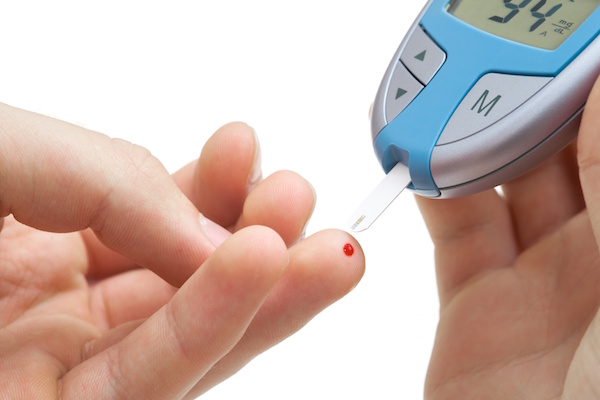
TUESDAY, Dec. 11 (HealthDay News) — Serious visual impairment — not simply the need for glasses — increased 21 percent between 1999 and 2008 for American adults older than 20 and diabetes may have played a significant part in that trend, new research suggests.
A number of factors appeared to contribute to the incidence of visual impairment, including a lack of insurance, poverty and age. However, the one risk factor that remained consistent throughout the study was diabetes, particularly diabetes lasting 10 years or more.
Another concerning finding linked to diabetes was a sharp increase in the incidence of visual impairment in young white people between the ages of 20 and 39. The rate of visual impairment in this group jumped 40 percent, while the rate of longstanding diabetes in young white adults rose 133 percent, according to the study.
“There has been a change on two fronts during the last seven to 10 years. One is that visual impairment is increasing, and this is visual impairment that can’t be fixed with glasses. The other is that 20- to 39-year-olds are now losing vision as well,” said study author Dr. Fang Ko, an ophthalmologist and resident at the Wilmer Eye Institute at Johns Hopkins University School of Medicine in Baltimore.
Results of the study are published in the Dec. 12 issue of the Journal of the American Medical Association.
Causes of visual impairment include age-related macular degeneration, cataracts, diabetic retinopathy, glaucoma and other retinal disorders. About 3 million people in the United States have a visual impairment that can’t be corrected with glasses, according to the study.
Ko said that in order to be classified as visually impaired, someone must have vision that’s 20/40 or worse. If you have 20/40 vision that means you can clearly see something from 20 feet away that someone with normal vision could see from 40 feet away. “You’re not completely blind, but your vision is definitely impaired. You might have trouble getting a driver’s license in some states, and it might affect your work,” she said.
Ko and her colleagues reviewed data from the U.S. National Health and Nutrition Examination Survey (NHANES) that was collected from 1999 to 2002 and from 2005 to 2008. NHANES is a nationally representative sample, and about 10,000 people completed surveys in each time period.
The incidence of visual impairment increased from 1.4 percent in 1999 to 2002 to 1.7 percent in 2005 to 2008, a 21 percent increase. At the same time, the rate of visual impairment in white people between the ages of 20 and 39 increased by 40 percent, from 0.5 percent to 0.7 percent, according to the study.
Age increased the risk of visual impairment by 5 percent to 7 percent, depending on the time period, while poverty more than doubled the risk in both time periods, the investigators found.
During the study time periods, the overall rate of diabetes lasting more than 10 years increased by 22 percent. (The study didn’t differentiate between type 1 and type 2 diabetes, though Ko said she thought most probably had type 2 diabetes.) Between 1999 and 2002, having longstanding diabetes increased the risk of visual impairment by 93 percent. In 2005 to 2008, having diabetes for 10 years or more increased the odds of visual impairment by more than 2.5 times.
Commenting on the findings, Dr. Vivian Fonseca, president of medicine and science at the American Diabetes Association, said: “In this study, the odds ratio is pretty high for visual impairment and diabetes, especially diabetes lasting 10 years or more. But, in other studies, we’ve seen a fall in the rate of diabetic retinopathy. What’s changed is the denominator. The overall prevalence of diabetes has gone up and the sheer volume of people with diabetes makes it look like things are getting worse.”
On an individual basis, diabetes has become more manageable and the rates of complications have generally been coming down, Fonseca noted, but this study “should alert people looking at the public health perspective that there’s yet another reason to do something about decreasing the rates of diabetes.”
Although the study showed an association between diabetes and rates of visual impairment, it did not prove a cause-and-effect relationship.
Both Ko and Fonseca said anyone diagnosed with type 2 diabetes should schedule an eye exam soon after their diagnosis, and then have a dilated eye exam every year after that. For people with type 1 diabetes, the recommendation is to begin having dilated eye exams every year beginning five years after the initial diagnosis.
More information
Learn more about various vision problems from the U.S. National Library of Medicine.

